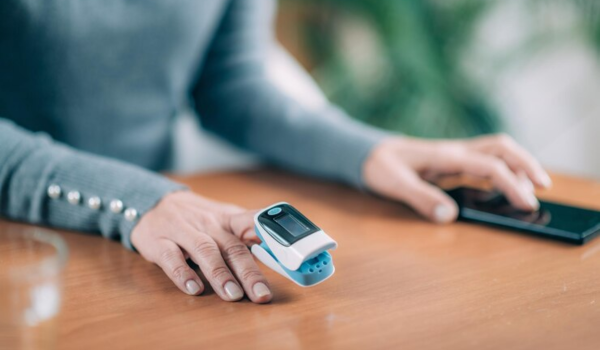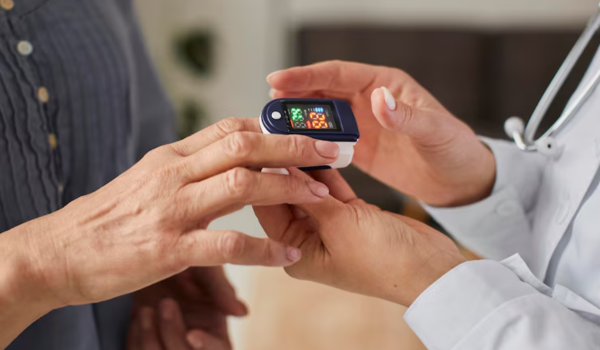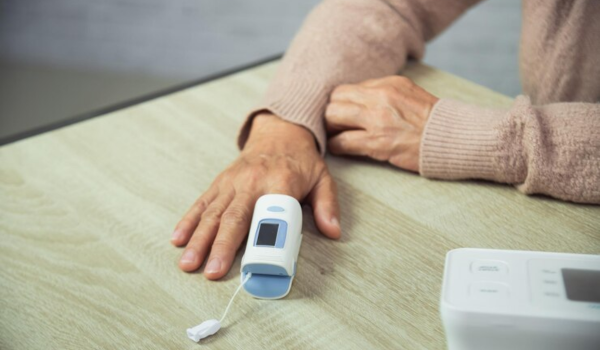Neslemy Blood Glucose Monitor: Scam or Real Innovation?
Neslemy Blood Glucose Monitor: What You Need to Know Before Buying This Controversial Device

Millions of people around the globe are managing diabetes and prediabetes conditions that require constant vigilance, lifestyle changes, and regular blood glucose monitoring.
The advent of continuous glucose monitors (CGMs) and blood glucose meters (BGMs) has empowered individuals to take greater control over their health.
But alongside legitimate technology, there’s also a troubling rise in deceptive products exploiting consumers’ fears and hopes.
One of the more widely discussed gadgets in this realm is the Neslemy blood glucose monitor.
Marketed as a revolutionary, non-invasive solution to glucose monitoring requiring no blood, no finger pricks, and offering “hospital-grade accuracy” this product has gained viral traction on social media and through email campaigns.
But is it really a breakthrough in diabetes care, or just another cleverly disguised scam? Let’s dig deeper and uncover the truth behind the Neslemy blood glucose monitor.
The Pitch: What Is the Neslemy Blood Glucose Monitor?
The promotional materials for the Neslemy blood glucose monitor claim the device uses “German precision technology” to deliver real-time blood glucose readings without any need for skin penetration. Common claims include:
- Non-invasive, no finger pricks
- Bluetooth-enabled with smartphone integration
- Hospital-grade 99.9% accuracy
- Lightweight and easy to use at home
- Suitable for Type 1, Type 2, and prediabetics
Marketing campaigns often include emotional stories and testimonials sometimes with actors posing as doctors or patients praising the ease, comfort, and life-changing nature of the product.
The device is typically sold through standalone web pages with flashy “limited-time offers,” encouraging bulk purchases or time-sensitive discounts.
But what do users actually receive when they place an order?
First Impressions and Unboxing Experiences
Reports from buyers have overwhelmingly noted the same pattern: rather than a revolutionary glucose monitoring device, what arrives in the mail is nothing more than a generic fingertip pulse oximeter, a tool designed to measure heart rate and blood oxygen saturation.
Key features of the delivered device include:
- A plastic finger clip
- A small screen displaying SpO2 (oxygen saturation) and pulse
- No mention of glucose measurement in the manual
- No FDA approval or CE certification for glucose monitorin
Customers often express confusion and disappointment, as the device does not contain any sensors capable of reading glucose levels from the skin, breath, or interstitial fluids. Despite elaborate marketing, the reality appears starkly different from expectations.
Understanding Blood Glucose Monitoring Technology
To grasp why the Neslemy device raises red flags, it helps to understand how legitimate glucose monitoring technology works.
1. Traditional Blood Glucose Monitors
These require a small drop of blood, usually from a fingertip, applied to a test strip. A chemical reaction in the strip measures the glucose level, and the device displays the reading. While somewhat invasive, this method is reliable and widely used.
2. Continuous Glucose Monitors (CGMs)
These wearable devices are inserted just under the skin, typically on the abdomen or arm. They continuously monitor interstitial glucose levels and provide real-time data to a smartphone or receiver. CGMs have gone through extensive clinical trials and are approved by regulatory bodies for accuracy and safety.
3. Non-Invasive Glucose Monitoring: The Holy Grail?
There is active research into non-invasive methods such as:
- Optical spectroscopy (e.g., near-infrared light, Raman spectroscopy)
- Transdermal sensing using electromagnetic signals
- Breath-based sensors analyzing exhaled biomarker
- Reverse iontophoresis
However, as of mid-2025, no non-invasive method has been proven to match the reliability of current invasive technologies.
Most remain in experimental or clinical testing phases. Any product claiming non-invasive, highly accurate glucose readings without FDA clearance should be approached with extreme caution.

The Science (or Lack Thereof) Behind Neslemy
Despite its medical claims, the Neslemy blood glucose monitor does not appear to be supported by peer-reviewed scientific research, regulatory approval, or credible third-party testing.
No Clinical Trials
A search of clinical trial registries reveals no studies involving the Neslemy brand. There are no papers in medical journals or even preliminary research preprints evaluating the technology.
No Regulatory Approval
Legitimate medical devices typically list approval from one or more of the following:
- U.S. FDA (Food and Drug Administration)
- CE Marking in Europe
- Health Canada
- TGA in Australia
The Neslemy device lacks any verifiable certification, registration, or approval number, indicating it has not passed the rigorous standards required for medical-grade blood glucose monitors.
Misleading Metrics
The pulse oximeter sent to consumers cannot measure glucose levels because:
- It lacks enzymes like glucose oxidase needed for detection.
- It doesn’t interact with interstitial fluid or blood.
- Its sensors are designed for oxygen, not glucose.
The “readings” it provides may simply be random or fixed numbers programmed into a generic display.
Consumer Reviews and Complaints
Social Media Feedback
Many users on platforms such as TikTok, Reddit, and Facebook have shared their experiences with the Neslemy monitor. Common themes include:
- “Complete scam. Doesn’t measure glucose.”
- “Got a pulse oximeter with no instruction manual.”
- “Customer service was unresponsive when I asked for a refund.”
These accounts are consistent and widespread, often including photos of the device received clearly showing a SpO2 monitor.
YouTube Investigations
Some healthcare influencers and diabetes educators have purchased the device to test it themselves. Their findings usually confirm that:
- The device shows readings even on inanimate objects.
- Glucose readings do not correlate with known levels.
- The monitor doesn’t connect to verified glucose tracking apps.
Psychological & Health Risks
- False claims about blood glucose monitoring can have serious consequences, especially for individuals managing chronic conditions.
False Security
Using an inaccurate device may lead someone to believe their glucose levels are normal when they are not, increasing the risk of:
- Diabetic ketoacidosis (DKA)
- Hypoglycemia
- Long-term organ damage
Delay in Treatment
- Relying on faulty readings could delay seeking medical attention during a glucose crisis, leading to emergency situations.
Emotional Toll
- Users often feel shame or embarrassment for being deceived, which can impact their mental health and trust in future technology.
Spotting a Scam: Red Flags to Watch For
Here’s how consumers can protect themselves from fraudulent medical devices:
| Red Flag | Why It’s Problematic |
| Too good to be true | Claims of “99.9% accuracy” and “no finger prick” with no evidence |
| No regulatory approval | Absence of FDA, CE, or other medical clearances |
| Lack of third-party reviews | Real medical devices are reviewed in journals or by experts |
| Fake testimonials | Overly positive reviews using stock photos or AI-generated names |
| Pushy marketing tactics | “Only 3 left in stock!” or limited-time offers designed to pressure purchases |
| Nonexistent customer service | Scam sites often disappear or ignore refund requests |
Legitimate Alternatives to Neslemy
- Blood Glucose Meters (BGMs): These require test strips but are inexpensive, accurate, and covered by insurance in many regions. Brands like Accu-Chek, OneTouch, and Contour are industry leaders.
- Continuous Glucose Monitors (CGMs): Available from trusted brands such as:
- Dexcom – Offers real-time continuous data and integration with apps.
- Freestyle Libre – User-friendly, scan-based readings with optional alerts.
- Eversense – Implantable sensors with long-term tracking.
- Glucose Apps and Logs: For those not using CGMs, manual tracking through digital apps can help recognize trends, though it still relies on accurate meter readings.
The Future of Non-Invasive Glucose Monitoring
Scientists continue to pursue breakthrough methods for pain-free glucose monitoring. Technologies in development include:
- Spectroscopy-based devices (under clinical testing)
- RF-based wearables measuring tissue dielectric properties
- Nanotechnology patches detecting glucose molecules transdermally
While exciting, these tools require years of development, safety testing, and regulatory review before they can be marketed legitimately.
Recommendations
For anyone considering purchasing a glucose monitor especially one promoted as non-invasive follow these steps:
- Check for FDA or CE approval – These agencies maintain searchable databases of approved devices.
- Look for clinical evidence – Reliable devices are typically evaluated in published studies.
- Research the company – Look for a physical address, customer service line, and business registration.
- Read reviews from reputable sources – Medical forums and regulatory watchdogs often warn about scams.
- Consult your healthcare provider – Always discuss new monitoring tools with a doctor or endocrinologist before changing your diabetes care routine.
How to Report a Fraudulent Medical Device Like the Neslemy Blood Glucose Monitor
If you’ve purchased a Neslemy device or a similar product under misleading claims, taking action can help protect others and potentially secure a refund. Here’s what you can do:
1. Report to the FDA (United States)
The U.S. Food and Drug Administration has a consumer reporting portal where you can file complaints about medical devices that are ineffective, unsafe, or falsely advertised.
- Visit the MedWatch Reporting Portal
- Provide full details: product name, seller, symptoms or consequences, and any correspondence
- Attach photos if possible
This not only documents your experience but can trigger investigations or enforcement actions against the manufacturer or distributor.
2. Contact the Federal Trade Commission (FTC)
The FTC investigates deceptive advertising and fraudulent business practices.
- File a complaint at reportfraud.ftc.gov
- Choose the “Scams and Rip-offs” category, and include the name of the seller or platform
3. Notify Payment Providers
If you used a credit card or a payment service like PayPal, dispute the transaction by citing “goods not as described” or “fraudulent medical claim.” Many customers have had success receiving chargebacks this way.
4. Warn Others on Trusted Platforms
Leave factual, detailed reviews on:
- Reddit threads (e.g., r/diabetes, r/scams)
- Consumer review sites like Trustpilot or Sitejabber
- Better Business Bureau (BBB), if applicable
The more consumer voices available, the better the chance others will avoid the trap.

Lessons Learned: Digital Literacy and Medical Consumerism
The Neslemy monitor controversy illustrates a broader issue of how modern marketing and technology can create illusions of legitimacy.
Here are some key takeaways for consumers in the digital age:
1. If It’s Viral, Vet It Thoroughly
Scams often go viral because they play to emotions of hope, fear, or urgency. Before sharing or purchasing, look beyond the ad:
- Is the company traceable?
- Are there independent reviews or discussions?
- Are health claims supported by peer-reviewed research?
2. Regulatory Approval Is Non-Negotiable
Never trust a medical device that does not clearly state its FDA or CE certification. These regulatory bodies exist for your protection.
3. Avoid Pressure Sales Tactics
Phrases like “Only 10 left!” or “Flash Sale Ends Tonight!” are hallmarks of scam sites. Legitimate healthcare tools do not rely on psychological manipulation to drive sales.
4. Know Your Rights as a Consumer
Depending on your country, consumer protection laws give you the right to:
- Request a refund for deceptive products
- Report unsafe medical devices
- Share your experience without legal risk (as long as it’s factual)
Who Is Behind Neslemy?
Tracing the real individuals or companies behind the Neslemy brand is difficult due to the use of:
- Proxy websites
- Untraceable domain registrars
- Disposable email addresses
- Third-party fulfillment centers
These sellers often shut down operations once the scam is exposed, only to reopen under a new name sometimes using the same exact product. Variations have been seen under names like:
- Glucowatch Pro
- OxiCare Monitor
- ZenSmart Health Scanner
This “shell game” is why public awareness and regulatory pressure are so important.
What Ethical Innovation Looks Like in Glucose Monitoring
Contrast the Neslemy situation with real innovation. Several companies are truly pushing boundaries in the glucose monitoring space but doing it the right way:
Apple (Rumored Development)
- For years, Apple has invested in non-invasive glucose tracking via Apple Watch. While it’s not yet available to the public, they’re pursuing clinical trials and are transparent about timelines and limitations.
Know Labs
- This U.S.-based company is working on an FDA-cleared non-invasive glucose monitor using radio frequency sensing. It’s still under clinical testing, but Know Labs openly publishes its research milestones.
University Research Collaborations
- Top academic centers are publishing credible research into glucose biosensors often working in partnership with medical device firms and subject to peer review and ethical standards.
Conclusion
The Neslemy blood glucose monitor, based on extensive user reports, testing, and lack of scientific support, does not live up to its claims.
Rather than being a groundbreaking tool in non-invasive glucose monitoring, it appears to be a repackaged pulse oximeter marketed with misleading information.
While the dream of painless, non-invasive glucose tracking is very much alive, the Neslemy monitor is not the product to deliver it.
Consumers should remain cautious, conduct thorough research, and rely on medically vetted tools when managing their health.
Ultimately, in matters as serious as diabetes care, accuracy isn’t optional it’s essential.
.